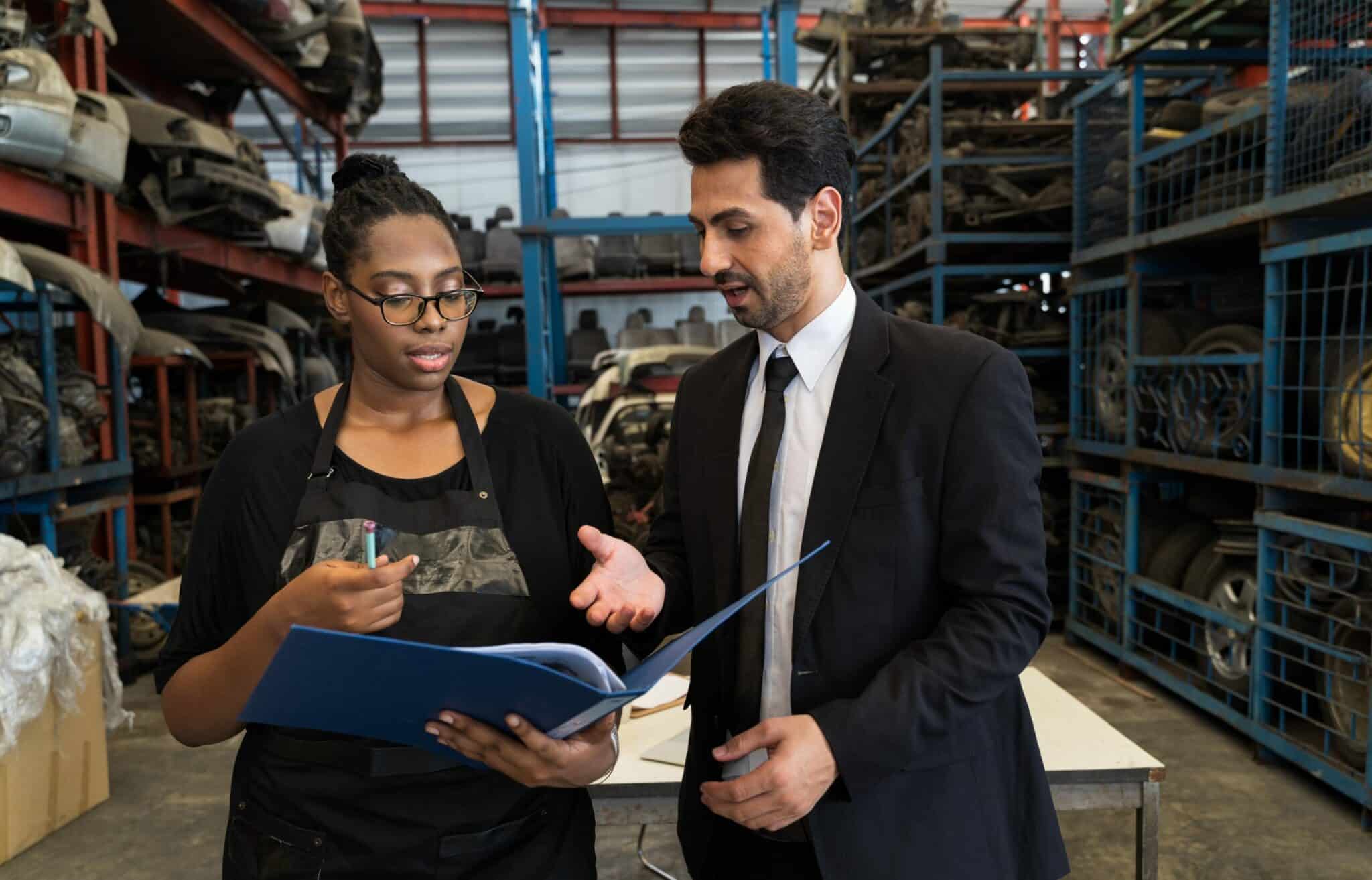Business equipment might be the make-or-break point for your business. Is your business lacking in productivity, or there’s increased machinery downtime? It’s time you invested in the right technology for the growth of your business. Acquiring equipment for your business requires you to make informed decisions. This article will enlighten you on how to purchase machinery for your company for increased efficiency, hence more profits.
Follow the tips below:
1. Identify Your Business Needs
To understand your business needs, outline all the processes of your day-to-day operations and identify the areas that are lacking and need improvement. Clearly outline how acquiring equipment will fill in the gaps identified and improve your business processes. Figure out if you can upgrade the existing equipment instead of replacing it to save on costs.
It would help if you sought opinions from third parties on whether you need the equipment. The third party could be your financial advisor or business partner. The aim is to purchase equipment that will be a worthy investment in the long run.
2. Know Your Financial Limits
Having financial limits doesn’t mean that you are bankrupt or having financial struggles. It just shows that you can’t acquire the equipment at the moment without affecting other processes that also need financing. Your accounting officer can enlighten you on the amount of money you can spend. There’s the option of seeking assistance from financial institutions, such as banks. With financial help, it’s essential to ensure that the equipment will bring in returns to help you repay the money lenders within the time frame given.
Knowing your financial limits provides the basis for your budget formulation.
3. Consider Costs
Many costs arise with the purchase of equipment besides its initial cost. Consider the maintenance costs of the equipment. The equipment might be cheap initially but later need recurrent repair and maintenance costs. Equipment manufacturing companies, such as Pacific Trail Manufacturing, offer different prices for their goods, mainly due to warranties or other services they offer. Purchase equipment that is cost-effective and not necessarily the cheapest. It’s always best not to forego the quality and durability of machinery as you put the price at the forefront during consideration.
Training costs are often left out during cost considerations. These costs aren’t only monetary; they also include the resources and time spent training your workers instead of production taking place. Find a balance to allow for the training and to reduce company downtime at the same time.
4. Check Out Available Equipment
After identifying the areas lacking in your business, research equipment that can help fill the gaps. The first step is to make the internet your friend. Identify all available options and vet each one of them. Consider the quality and durability of the equipment. Look out for certifications on them. Certifications mean that the equipment has been approved for use and that they’ve met the set standards.
Select business equipment that you can upgrade. Upgradeable equipment eliminates the need to replace it once it loses value or your business outgrows its performance characteristics. Also, ensure that the equipment has readily available spare parts and accessories in case repairs are needed in its life span.
Check reviews from previous and current users, see the most preferred products and understand why. The reviews will be a guiding principle in your choice.
The price of the equipment is another vital factor to consider. Purchase the best equipment that well suits your budget, and as previously stated, don’t forget to look out for hidden and long-run costs.
5. Consider Leasing Or Buying Used Equipment
Although using refurbished equipment isn’t anyone’s ideal preference, it might be the most viable option cost-wise. However, be careful as you purchase used equipment. Ensure the equipment hasn’t been stolen or has any conflict of interest surrounding it.
Leasing might be the best option if purchasing doesn’t bring you value for money. It’s also the preferred option if you’re looking to acquire equipment that keeps on advancing. You don’t want to purchase equipment that will serve you for only a year or two, after which you’ll need to acquire another one of the same kind.
6. Vet The Available Vendors
Different vendors offer various prices for the same product. Therefore, you need to do your due diligence to ensure you get quality equipment at a competitive price.
Get quotes from various suppliers to give you a rough idea of how much it should cost you to acquire the equipment. Inquire of any costs that you might incur beyond the purchasing price of the equipment.
Choose a vendor with a good reputation based on previous and current customers. Look out for suppliers who have warranties, discounts, after-sale services, such as training and maintenance, among others.
It would be best to purchase equipment direct from the manufacturer, which might even be cheaper than using second and third parties.
7. Go For Digital Technology
Emerging digital technology has proven to provide better efficiency and can be cost-effective in the long run. This technology operates at low costs without compromising on quality. Although it might be expensive to acquire at first, it’s an investment worth considering for your business. Digital technology might increase the automation of most of the processes, reducing the need for much labor and reducing the costs you’d have paid for their wages. Unlike non-digital technology, digital technology eliminates or reduces overhead costs to the bare minimum, increasing your company’s profits and returns.

8. Select A Reputable Brand
Different companies manufacture the same equipment. Select the most reputable brand. A reputed brand has already established a name through previous goods and services provided. You’re therefore sure of acquiring quality equipment.
Consider selecting a brand that has been in the business for quite some time. Since most companies thrive for approximately five years before collapsing, it’s best to choose one that’s been there for years. This ensures that they’ll be there to sort any issues that might arise in the course of the equipment’s lifetime, even if it’s 10 years. It would be disheartening to buy from a vendor and find that they’re out of business when you contact them due to an issue arising with the equipment you purchased from them. This would lead to tremendous losses for your business.
9. Choose Energy-Efficient Equipment
Energy-efficient equipment runs efficiently when using the least amount of energy. This saves you money from reduced energy bills. Using energy-efficient machinery also protects the environment.
Put your team’s health at the forefront as you purchase equipment. Please refrain from machinery that emits poisonous gases as it runs. It might not affect them at the moment, but it might in the long run, due to consistent inhalation of the said gas, leading to the detriment of their health.
10. Inspect Equipment Before Purchase
Before paying for any machinery for your business, ensure you see it as it’s being operated. This allows you to point out any issues and gives you a platform to question any aspects regarding its running. Inspecting equipment ensures that you don’t purchase one that’s not working correctly or has a defect.
When buying from an online vendor, inspecting the good first ensures the machinery is available besides checking its performance. Some suppliers might post a stolen or edited picture of the said equipment and ask you to pay upfront. On paying, the vendor goes offline, and you’re unable to find them. This would lead to double losses for your business; lost money, and unpurchased equipment.
11. Read The Contract And Terms
A majority of reputable brands manufacturing and selling expensive machinery have terms that are in line with the equipment purchasing. Such contracts discuss maintenance, spare parts, customer support, liabilities, among others. Please read these terms to know what to expect after you’ve purchased the machinery and the aspects the vendor isn’t responsible for. Seek assistance from your legal team to spell out the conditions for you before accepting to purchase from them. If you don’t like the terms stipulated, you can buy from another vendor with favorable conditions.
12. Take An Insurance Cover
If you’re acquiring expensive machinery for your business, consider taking insurance cover. The equipment can get damaged during its operations by your team or during natural disturbances such as earthquakes and hurricanes, or fire. Fatal or life-altering accidents arising from the equipment might bring about expensive lawsuits from your workers. Paying for such damages and cases can be very expensive without a cover. The cover will take care of all the associated costs without affecting the financial status of your business.
13. Don’t Wait For A Breakdown To Happen
Proper planning prevents disrupting activities, such as production downtime and customer dissatisfaction. Waiting until equipment breaks down will lead to a stoppage of operations until the equipment is replaced. Planning ahead will enable you to acquire the machinery before it stops running.
Acquiring equipment early in advance prevents room for making rush, uninformed decisions due to the rising pressure. In the situation of work stoppage, you’ll be forced to replace the equipment within hours to prevent losses, which might make you select machinery that’s not viable.
Conclusion
Purchasing equipment for your business doesn’t need to be tasking. Use the tips given in this article to ease the process and have your business increase its productivity and gain profits as soon as possible.


